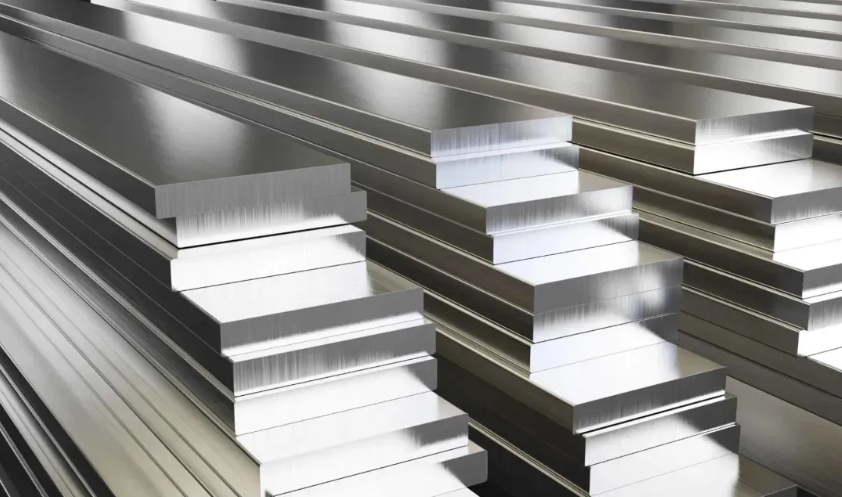Aluminum is a very commonly specified material for extrusion and shape profiles because it has mechanical properties that make it ideal for forming and shaping metal from billet sections. The high ductility of aluminum means that the metal can be easily formed into a variety of cross-sections without expending a lot of energy in the machining or forming process, and aluminum also typically has a melting point of about half that of ordinary steel. Both of these facts mean that the extrusion aluminum profile process is relatively low energy, which reduces tooling and manufacturing costs. Finally, aluminum also has a high strength to weight ratio, making it an excellent choice for industrial applications.
As a byproduct of the extrusion process, fine, almost invisible lines can sometimes appear on the surface of the profile. This is a result of the formation of auxiliary tools during extrusion, and additional surface treatments can be specified to remove these lines. To improve the surface finish of the profile section, several secondary surface treatment operations such as face milling can be performed after the main extrusion forming process. These machining operations can be specified to improve the geometry of the surface to improve the part profile by reducing the overall surface roughness of the extruded profile. These treatments are often specified in applications where precise positioning of the part is required or where the mating surfaces must be tightly controlled.
We often see the material column marked with 6063-T5/T6 or 6061-T4, etc. The 6063 or 6061 in this mark is the brand of aluminum profile, and T4/T5/T6 is the state of aluminum profile. So what is the difference between them?
For example: Simply put, 6061 aluminum profile has better strength and cutting performance, with high toughness, good weldability and corrosion resistance; 6063 aluminum profile has better plasticity, which can make the material achieve higher precision, and at the same time has higher tensile strength and yield strength, shows better fracture toughness, and has high strength, wear resistance, corrosion resistance and high temperature resistance.
T4 state:
solution treatment + natural aging, that is, the aluminum profile is cooled after being extruded from the extruder, but not aged in the aging furnace. The aluminum profile that has not been aged has a relatively low hardness and good deformability, which is suitable for later bending and other deformation processing.
T5 state:
solution treatment + incomplete artificial aging, that is, after air cooling quenching after extrusion, and then transferred to the aging furnace to keep warm at about 200 degrees for 2-3 hours. The aluminum in this state has a relatively high hardness and a certain degree of deformability. It is the most commonly used in curtain walls.
T6 state:
solution treatment + complete artificial aging, that is, after water cooling quenching after extrusion, the artificial aging after quenching is higher than T5 temperature, and the insulation time is also longer, so as to achieve a higher hardness state, which is suitable for occasions with relatively high requirements for material hardness.
The mechanical properties of aluminum profiles of different materials and different states are detailed in the table below:
Yield strength:
It is the yield limit of metal materials when they yield, that is, the stress that resists micro plastic deformation. For metal materials without obvious yield, the stress value that produces 0.2% residual deformation is stipulated as its yield limit, which is called conditional yield limit or yield strength. External forces greater than this limit will cause the parts to fail permanently and cannot be restored.
Tensile strength:
When aluminum yields to a certain extent, its ability to resist deformation increases again due to the rearrangement of internal grains. Although the deformation develops rapidly at this time, it can only increase with the increase of stress until the stress reaches the maximum value. After that, the ability of the profile to resist deformation is significantly reduced, and a large plastic deformation occurs at the weakest point. The cross-section of the specimen here shrinks rapidly, and necking occurs until it breaks.
Webster hardness:
The basic principle of Webster hardness is to use a quenched pressure needle of a certain shape to press into the surface of the sample under the force of a standard spring, and define a depth of 0.01MM as a Webster hardness unit. The hardness of the material is inversely proportional to the depth of penetration. The shallower the penetration, the higher the hardness, and vice versa.
Plastic deformation:
This is a type of deformation that cannot be self-recovered. When engineering materials and components are loaded beyond the elastic deformation range, permanent deformation will occur, that is, after the load is removed, irreversible deformation or residual deformation will occur, which is plastic deformation.
Post time: Oct-09-2024









